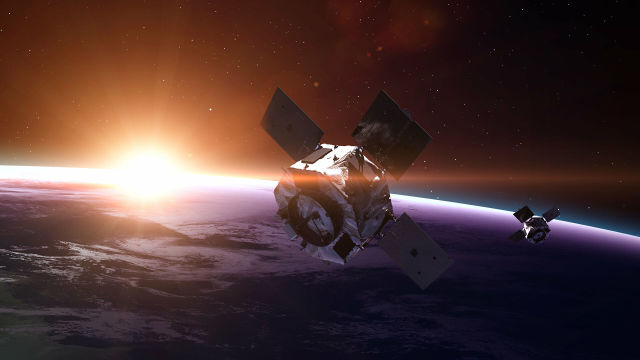Thanks to this algorithm, satellites, in particular, will be able to determine the strength of the magnetic field at any point in the orbit
TASS, April 12. Russian scientists have developed algorithms for the interaction of nanosatellites, which are designed for scientific measurements. The article describing the work was published by the scientific journal Advances in Space Research, the press service of the Skolkovo Institute of Science and Technology writes briefly about it.
"An important applied result of our work is the possibility of improving the system of orientation and stabilization of satellites that use magnetometers (sensors for measuring the magnetic field). <...> The result of processing swarm measurements can be a service like GPS, which, unlike the original, does not distribute data about the speed and coordinates of the object, but the values of the magnetic field," said Anton Afanasyev, one of the authors of the work.
The research was carried out within the framework of the project "Swarm of small spacecraft" (Swarm of ICA). Its main goal is the deployment of autonomous groups of small satellites and the development of their swarm interaction. More than 25 Russian organizations participate in the project.
As one of the experiments of the Swarm ICA project, the scientists proposed using four satellites operating together so that the magnetic field strength could be determined at any point in the orbit. The system, as the authors of the development note, is completely autonomous and allows satellites to process information on board, refine the measurements made and predict the values of the magnetic field using the interpolation method.
"We use this kind of interpolation as kriging. Kriging selects the values of the magnetic field in accordance with the characteristics of the magnetic field (autocorrelation). The field is three-dimensional, so we must use the formation that makes up the simplest three-dimensional simplex-tetrahedron, since the three points lie on the plane. Therefore, we chose the formation consisting of four satellites as the minimum possible for solving the task, " Afanasyev added.
As a result, the satellites exchanged data about their position and their measurements, which as a result creates a self-organizing system that is able to demonstrate collective behavior and perform common tasks for the group. Scientists note that the new method can be used to build large groupings and reduce their overall cost by using cheaper sensors.

